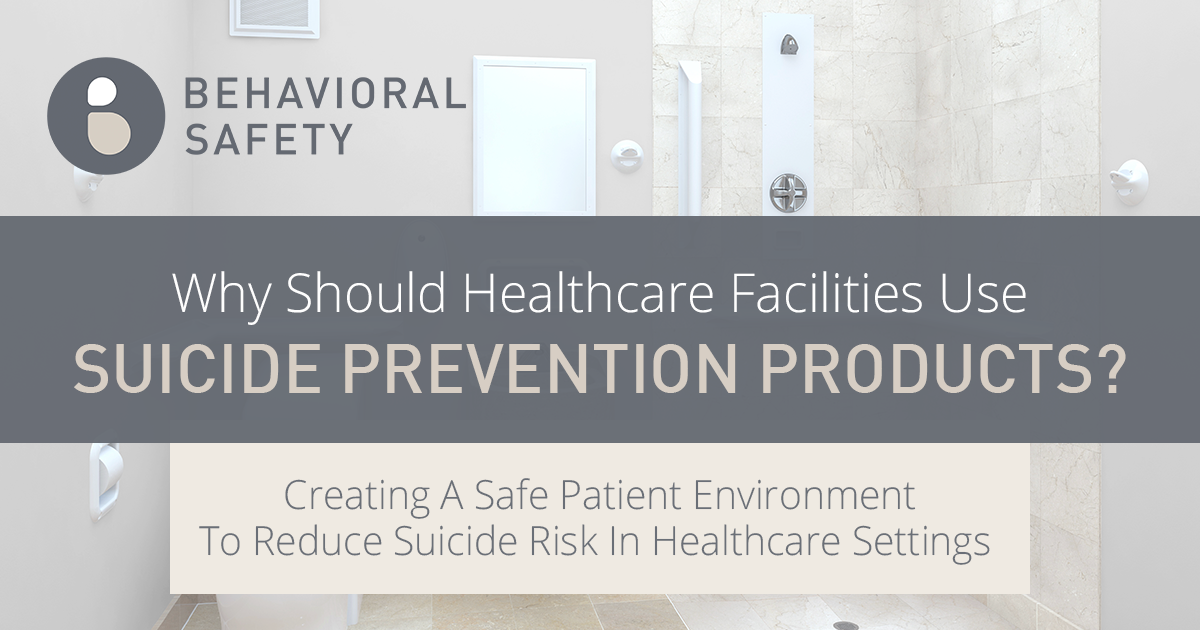Why Should Healthcare Facilities Use Suicide Prevention Products?
Creating A Safe Patient Environment To Reduce Suicide Risk In Healthcare Settings
Suicide is among the leading causes of death in the United States, and that rate continues to increase. In 2018 alone, the CDC reported that suicide claimed the lives of 47,511 people.
In any hospital, behavioral healthcare, or institutional setting, there is a risk of patient suicide. Though this seems to be a preventable catastrophe, it is a serious problem that many organizations face each and every day.
Based on suicides that occurred in inpatient hospital settings, 73.9% occurred during psychiatric treatment. Additionally, between 48.5 and 64.9 hospital inpatient suicides occur each year in the United States, according to a study by the NVDRS and The Joint Commission from 2010 to 2017.
Using Deterrence To Prevent Suicide Attempts
Suicide remains an issue for behavioral healthcare patients, with 70% of suicides occurring through using a ligature point in the patient’s bathroom, bedroom, or closet. A ligature point is anything in an environment that can be used in combination to create a strangulation tool in order to cut off blood supply to one’s brain, particularly for the purpose of suicide. Suicide by hanging introduces a large risk, especially if a patient is not monitored at all times.
Proper safety precautions must be put in place to ensure the safety of patients, and that includes ways to help prevent suicide. One of the ways to do this is to install features, products, furniture, and appliances that are designed specifically to deter and remove the possibility of ligature as a means for harming oneself.
For example, a typical towel hook in a bathroom has the ability to tie something to it, which could then be used by a patient to harm themselves. Alternatively, an effective ligature or suicide resistant towel hook would not allow bodyweight to be sustained, and it should be sloped or round, so that any tie-off point would be impossible. Similarly, a suicide resistant shower head should be designed to remove the possibility of attaching something to attempt suicide by hanging.
In addition to ligature resistance, it is imperative that all products or features in a patient’s room or living space are also tamper-proof, only allowing access or removal to maintenance or hospital staff. All features must be sturdy and reliable, also removing any sharp edges or points that could be used to inflict self-harm.
Products Designed For Prevention
Behavioral Safety Products specializes in designing products for patient environments that promote suicide prevention. Our extensive line of ligature resistant products includes shower heads, shower controls, sinks, faucets, toilets, grab bars, paper towel dispensers, soap dispensers, mirrors, TV enclosures, HVAC enclosures, window shades, door hardware, furniture, and more.
With over 45 years of experience in the behavioral healthcare industry, Behavioral Safety Products has an unwavering commitment to never compromise when it comes to the safety or humanity of patients’ lives. Our passion is to save patients’ lives, while improving the quality of their environment by working with facilities, architects, and engineers to be front-runners in problem-solving as new safety issues arise.
Behavioral Safety Products also provides rapid access to critical products as facilities face steady increases in patient acuity and greater difficulty in patient monitoring. Behavioral Safety Products equips customers with an integration of engineering input, product support, and knowledge from extensive field experience that will assist any facility.
Interested in our products and our mission? Visit https://besafeprod.com/contact/ to learn more or get in touch with us.
If you or someone you know is contemplating suicide, contact the National Suicide Prevention Lifeline 800-273-8255 or visit https://suicidepreventionlifeline.org/
Resources:

